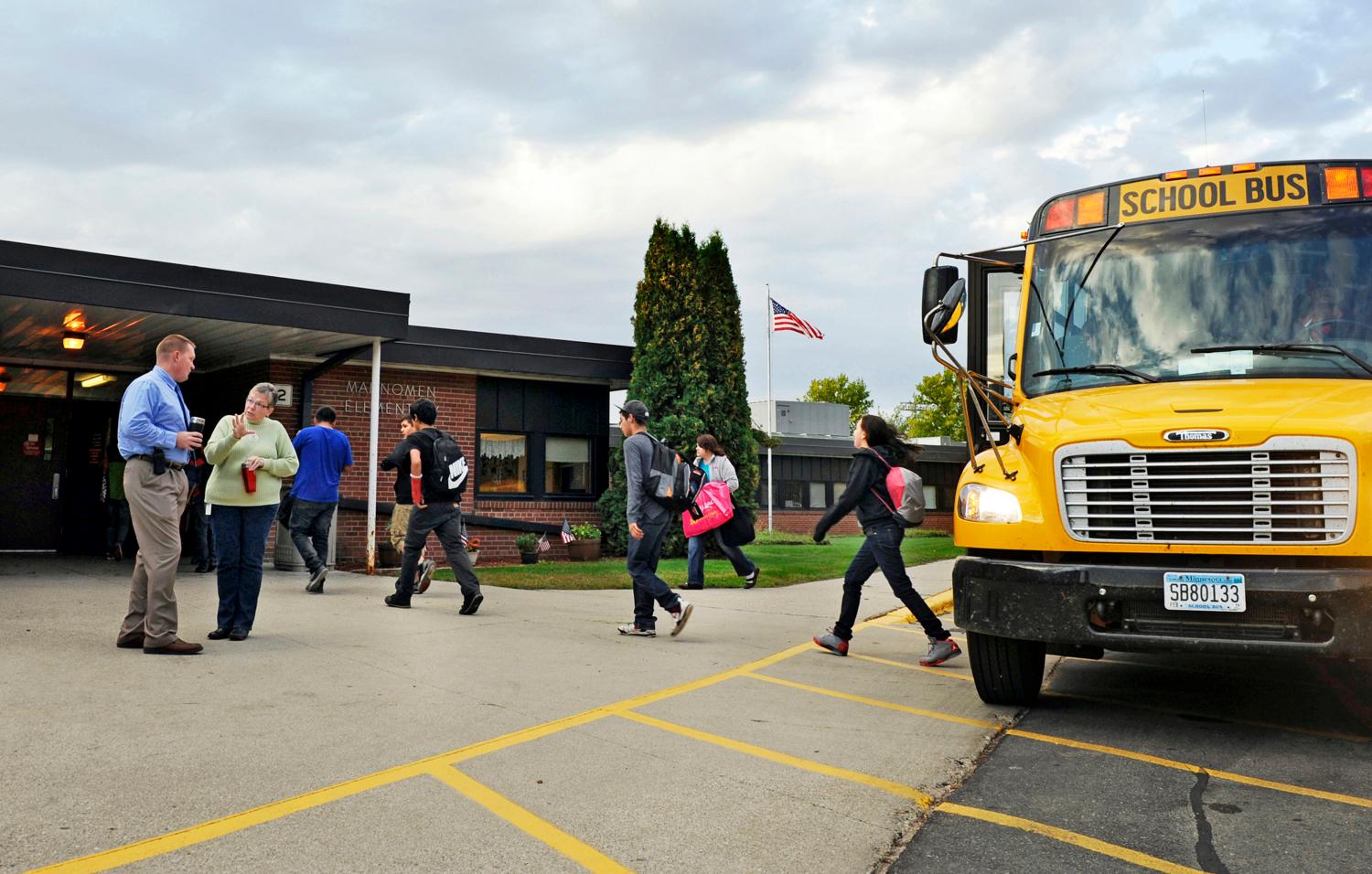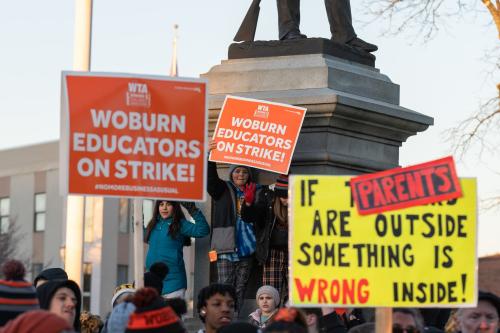While a growing number of studies find the detrimental effects of teacher mobility on student achievement, few studies have attempted to measure the effects of principal turnover. Nationally, about one in five schools lose their principal each year. But in North Carolina, for example, that figure climbs to more than one in three in the lowest-performing schools. If principal mobility influences average student achievement in a school, negative effects of each principal’s departure would affect far more students than negative effects of an individual teacher leaving. Principal turnover may also affect other school-level factors, including teacher turnover—prompting additional indirect detrimental effects of the principal’s departure.
In a recent working paper, we estimate the influence of principal turnover on a variety of school outcomes using administrative data from North Carolina. We find that principal turnover is associated with lower test scores, school proficiency rates, and teacher retention. While these estimates can be partially explained by the difference in quality between the departing and replacing principal, we find evidence that the disruption from the turnover event itself also appears to contribute to a decline in several school outcomes.
The estimated effect sizes of principal turnover are small, but continue for up to three years after the transition. Specifically, we observe test scores decline in the first year of a principal transition, and that the negative effect on test scores continues into the second and third year of the new principal’s tenure. Teacher turnover also increases after a principal transition and remains elevated for the first three years of the new principal’s tenure.
Losing multiple principals in succession, therefore, compounds the effects of principal turnover, and frequent turnover occurs regularly in the data. In North Carolina, for example, nearly 10% of schools lose at least two principals in three years. Such frequent turnovers are even more common in schools with high poverty and minority student populations. More than 12% of schools in the highest quartile of economically disadvantaged students lost at least two principals in three years. By comparison, about 7% of schools in the lowest quartile of economically disadvantaged students experienced at least two principal turnovers during the same time period.
One of the challenges of identifying the effects of principal turnover is that any staffing change has a replacement component—any two principals will vary in their effectiveness—and this difference in effectiveness is confounded with the effect of the turnover. For example, if the replacement principal is less effective than the departing principal, the combined effect of the replacement and the turnover event itself translates to an even greater setback for students in the school. Conversely, replacing a low-performing principal with an effective one could mitigate some of the negative effects of turnover. We therefore provide a set of estimates that aim to separate the turnovers that are likely to be voluntary (where the departing principal could be either high or low performing) from those that may be involuntary (which would often signal poor performance of the departing principal).
We find that principal transitions resulting from plausibly voluntary principal departures produce consistent negative effects on school performance. Specifically, we find that principal transitions resulting from voluntary departures are associated with:
- a 0.01 standard deviation decrease in average test scores schoolwide;
- about a 0.7 percentage point decrease in school-level proficiency; and
- about a 1.7 percentage point increase in teacher turnover.
Interestingly, and in contrast with the teacher turnover literature, we do not find evidence that the magnitude of the negative effects increases when turnover occurs during the school year. That means a school district official looking to replace an underperforming principal might benefit from replacing him as soon as possible rather than waiting for the summer—especially if a higher quality replacement is available during the school year.
Overall, our findings have relevance for both practitioners and policymakers. In particular, these negative effects highlight a trade-off for school district officials making staffing decisions: Replace an underperforming principal and absorb a small negative effect on school outcomes, or make efforts to retain and develop a struggling principal to avoid the disruption associated with a principal transition? As we note above, even a small effect at the school level has far-reaching implications because it affects all students and teachers in a school. However, a small effect may be mitigated by a strong replacement principal who will benefit the school in the longer run. Our findings suggest that school district officials making these decisions should consider:
- The difference in effectiveness between the underperforming principal and the available pool of replacement principals. If an effective replacement is not available, the school may be better off if the district makes efforts to develop rather than replace the existing principal with a novice principal.
- The frequency of principal turnover in the school. If the school has lost several principals in the past few years, it may already be experiencing the continued negative effects of past principal transitions. Adding another transition may further destabilize an already unstable situation. Alternatively, rapidly replacing an ineffective principal (assuming the principal’s performance can be attributed to ineffectiveness rather than the disruption of the multiple transitions) may help a school rebound more quickly from ineffective leadership than delaying an inevitable transition for multiple years. To that end, districts would benefit from considering the magnitude of a principal’s underperformance relative to the compounded negative effects of multiple transitions.
Policymakers, meanwhile, would benefit from considering these findings in the context of federal requirements to improve the lowest-performing schools. For example, principal replacement was at the core of earlier federally mandated school turnaround models and many states’ more-rigorous reforms under The Every Student Succeeds Act, based on the theory that a new principal is necessary to disrupt the ineffectual status quo in low-performing schools and bring about rapid improvement under new leadership. But if the disruption from the principal turnover precipitates its own set of negative consequences for the school, any positive effects of school reform may take time to emerge or may be muted in the first years of the new principal’s tenure. To that end, policymakers charged with reforming low-performing schools should consider:
- Both the costs and benefits of principal replacement. Principal replacement in low-performing schools may do more harm than good unless higher-quality principals can be hired to replace the current principal.
- The duration of school turnaround. We show that the negative effect of a principal transition is detectable for the first three years of the replacement principal’s tenure, which means that any reform strategy will need to overcome the negative effects of principal replacement while also improving the prior school performance.
Our study contributes to mounting evidence that principal turnover has a negative effect on school outcomes. These effects are small, consistent, and continue over multiple years. Therefore, district administrators would be wise to manage and develop the quality of the pool of available replacement principals as a talent management strategy, while also considering evidence-based strategies for improving the performance of principals who are struggling prior to replacing them.
The Brookings Institution is committed to quality, independence, and impact.
We are supported by a diverse array of funders. In line with our values and policies, each Brookings publication represents the sole views of its author(s).







